Reuse allows speeding up the ontology development process and improves the quality of the resulting ontologies. The use of patterns to encourage reuse has been successfully explored in Ontology Engineering. An Ontology Pattern (OP) captures a solution for a recurring modeling problem. Very closely related OPs can be arranged in an Ontology Pattern Language (OPL). An OPL establishes relationships between the patterns and provides a process guiding the selection and use of them for systematic problem-solving. Further information about OPs and OPLs are available at Ontology Patterns and Ontology Pattern Languages.
To make it easier using an OPL, the relationships between the patterns and the process for navigating them should be represented in a clear and unambiguous way. A visual notation can be used to provide a visual representation of an OPL, aiming at improving communication. To facilitate understanding an OPL and strengthen its use, this visual notation must be cognitively rich.
OPL-ML (Ontology Pattern Language Modeling Language) is a modeling language for representing OPLs. Some of its striking features are the following: (i) OPL-ML defines explicitly its abstract syntax by means of a meta-model; (ii) OPL-ML concrete syntax was designed following Moody’s principles for designing cognitively effective visual notations; and (iii) OPL-ML was designed considering the results of a systematic mapping on visual notations for representing Software Engineering pattern languages, and from experimental studies involving the use of OPLs.
Related Publications:
- QUIRINO, G.; BARCELLOS, M. P.; FALBO, R. A.. OPL-ML: A Modeling Language for Representing Ontology Pattern Languages. In: 5th International Workshop on Ontologies and Conceptual Modeling (Onto.com 2017), Valencia – Spain. Proceedings of the 36th International Conference on Conceptual Modeling (ER 2017), 2017.
- QUIRINO, G.; BARCELLOS, M. P.; FALBO, R. A.. Visual Notations for Software Pattern Languages: a Mapping Study. In: Proceedings of the XXXII Brazilian Symposium on Software Engineering (SBES 2018), 2018, São Carlos – SP.
- TEIXEIRA, M. G. S.; QUIRINO, G.; GAILLY, F.; FALBO, R. A.; GUIZZARDI, G.; BARCELLOS, M. P.. PoN-S: A Systematic Approach for Applying the Physics of Notation (PoN). In: Evaluation and Modeling Methods for System Analysis and Development (EMMSAD 2016), 2016, Ljubljana – Slovenia. Lecture Notes in Business Information Processing – Enterprise, Business-Process and Information Systems Modeling (Proceedings of the 17th International Conference, BPMDS and the 21st International Conference EMMSAD, Held at CAiSE), 2016.






